Recipes
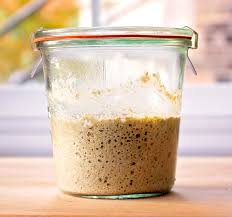
Rye Sourdough
Prepare the sourdough and ripen for 14 to 16 hours at 24℃ When ready use for bread recipe
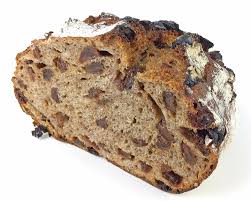
Rye Raisin And Walnut Bread
Straight dough method (mixed fermentation) Mix the water, yeast, flours, salt, starter and lemon confit for 6 minutes at first speed. Add yeast and mix another 4 minutes rest for 60mn and cut to 900gr shape and place into bread loaf and proof for 1-2 hours bake at 220℃ for 60mn
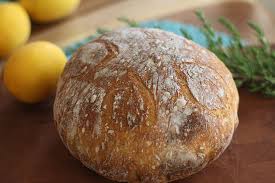
Rye Lemon Bread
Straight dough method (mixed fermentation) Mix the water, yeast, flours, salt, starter and lemon confit for 6 minutes at first speed. Add yeast and mix another 4 minutes rest for 60mn and cut to 450gr shape and place into wooden basket and proof for 3-4 hours bake at 220℃ for 30mn
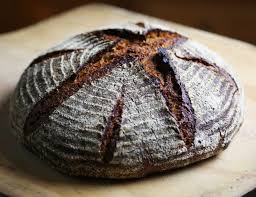
Rye Bread
mixing: Place all the ingredients in the mixing bowl. In a planetary-style mixer, mix on first speed until the ingredients are incorporated, about 3 min- utes . The dough should be of medium consistency. Turn the mixer to second speed and mix for about 5 more minutes, until the gluten network is moderately developed. Desired dough temperature: 24℃ bulk fermentation 1 hour. Dividing and shaping: If using a 36-part dough divider, divide the dough into 2 pieces weighing 1.200 kg each. Don’t round or preshape the dough. If hand scaling, divide the dough into 450-800or 1200gr portions, trying to cut pieces that are square. Place the dough pieces on a sheet pan lined and there will be a minimum of crust. Allow the dough to proof fully, until the bread are quite light to the touch. Baking: Just before the bake, brush the top of the rolls with water and add some seed if desired Bake at 190℃for 45mn minutes, or until the tops are golden. The sides and center should remain soft and pliable.
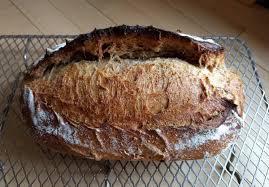
Rustic Bread
mixing: Add all the ingredients to the mixing bowl except the pre-ferment. In a spiral mixer, mix on first speed for 3 minutes in order to incorporate the ingredients. As the dough is coming together, add the pre-ferment in chunks. If necessary, correct the hydration by adding water or flour in small amounts. Finish mixing on second speed for about 21⁄2 minutes. The dough should be supple and moderately loose, with moderate gluten development. Desired dough temperature: 23-24℃ 3. Bulk fermentation: 21⁄2 hours. 4. folding: Fold the dough twice, once after 50 min- utes of bulk fermentation and again 50 minutes later. 5. dividing and shaping: Divide the dough into 1.5-pound pieces. Preshape lightly into rounds and place on a lightly floured work surface, seams up. Cover the rounds with plastic. When the dough has relaxed sufficiently (10 to 20 minutes), shape into round or oval loaves, place them either into floured bannetons or between folds of floured baker’s linen, and cover with plastic. 6. final fermentation: Approximately 11⁄4 to 11⁄2 hours at 23-24℃ 7. Baking: Invert the risen loaves onto the loading conveyor or peel. Slash the desired scoring pattern with a blade. Presteam the oven, load the bread, and steam again. Bake at 220℃ . Open the oven vents after the loaves show color, in order to finish the bake in a drying oven. Loaves scaled at 900 gr should bake for 35 to 38 minutes.
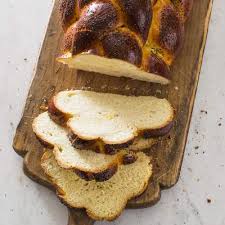
Rich Sweet Dough
Sponge method Make a sponge with the first 3 ingredients. Ferment until double. Cream butter, sugar, and salt until well blended. Blend in eggs. Add the sponge. Mix to break up the sponge. Add the flour and develop the dough. Mixing time: about 3 minutes Fermentation 30–40 minutes or retard immediately. Retarding makes it easier to handle the dough, which is very soft.
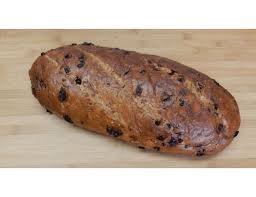
Cramberry Vegetable Bread
mix first part water flour mix the cramberry witgrated carrot, chive and onion make the dough with second part of flour, sugar, milk powder, sel, firt part of dough, milk, water,and yeast mix 3 minute at 1s speed the 5mn at 2nd speed add the butter, all the fruit and vegetable and grated cheese, finish mixing to conbine all ingredients restthe dough on plastic container 50mn for fermentation cut 150 gr dough and shape and rest 20 mn puch back the dough roll to shape final bread rest 40mn for the second fermentation add some water on top the bread and spray sone grated cheese before inserting to oven at 210 add the steam and down the temperaturew to 190-200 for 30-35 mn 12 memove the breat and transfer to a rack to cool down
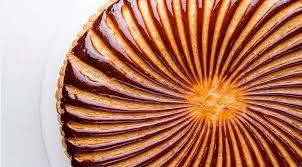
Puff Pastry Galette
beurre manier: add the first three ingerdient, flour t45, flour t55 and butter. mix with a paddle until smooth texture. keep in chiller étrempe: in a dough mixer add water, white vinegar, salt, flour and butter, mix until all ingredient are well incorporate but do not over mix. add the beurre manier and détrempe and do 2 single fold and keep 12 hour in chiller repeat that operation 5 time to get a 10 fold puff pastry
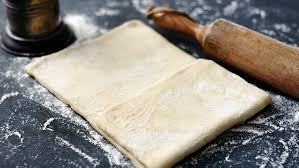
Puff Pastry
make a dough with the flours, salt, butter and cold water. place in the fridge. stir in the butter and make 4 double fold or 6 single fold

Proscuitto Bread
Straight dough method (mixed fermentation) Mix the water, yeast, flour, salt, and fat 6 minutes at first speed. Add Basic Yeast Starter and mix another 4 minutes. Add the prosciutto and mix another 1–2 minutes. Fermentation 1 hour at 27°C shape Scale at 360–540 g or as desired. Shape like long Italian loaves. . Baking 220°C with steam
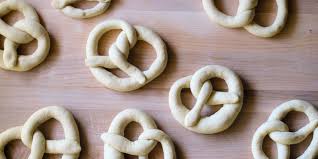
Pretzel Dough
Straight paste method SHAPING Scaling: With a bench scraper, cut a long piece of dough weighing 150g. With the palms of your hands, roll on the bench until you reach a uniform band 75 cm long. Twist in a pretzel shape. Soak in a solution of 60 g sodium bicarbonate in 500 ml of water. Arrange on baking sheets lined with parchment. Stretch and reform pretzel shapes as needed. (Note: After soaking in soda solution, the units are difficult to handle. If desired, first cook the pretzels, then brush thoroughly with the soda solution.) Sprinkle with pretzel salt. Bake at 260°C for 8 to 9 minutes or until golden brown. Optional: Dip the melted butter immediately after cooking and drain.
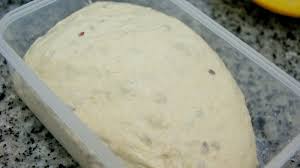
Fermented Dough
Disperse the yeast in the water, add the flour and salt, and mix until just smooth. At 60 percent hydration, it will be stiff and dense, but add water, if necessary, to correct the hydration. Cover the bowl with plastic and let stand for 12 to 16 hours at about 18℃. When ripe, the pre-ferment will be domed and just beginning to recede in the center.
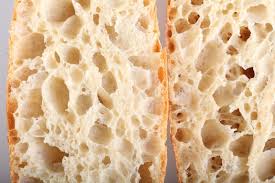
Poolish Baguette
to make the poolish: Combine the flour, water, and yeast. Cover the container and allow to rest for 12 to 16 hours at room temperature. When the poolish is ready to use, it will be doubled in size, and filled with large bubbles. To make the dough: Add the water to the poolish. Add the flour, mix to combine, cover the bowl, and allow the mixture to rest for 20 minutes. This rest period (autolyse, in French) allows the flour to absorb the liquid and the gluten to start its development, making kneading easier and more effective. Add the yeast and salt, and knead the dough until it's fairly smooth, about 5 to 7 minutes by hand, 3 to 4 minutes by electric mixer, or 5 to 7 minutes in a bread machine. The gluten will continue to develop as the dough rises, so you don't want to develop it fully during the kneading process. Place the dough in a lightly greased bowl, cover the bowl, and allow the dough to rise, at room temperature, for 1 1/2 hours. To help develop the gluten, distribute the yeast's food, and expel any excess carbon dioxide, turn the dough every 30 minutes during the rising time: gently fold all four sides into the middle, and turn the dough over. Transfer the dough to a lightly greased work surface, divide it in half, shape each half into a rough log, cover them, and let them rest for 15 to 20 minutes. This allows the gluten to relax, making it easier to shape the bread.
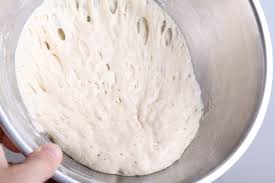
Poolish
Prepare the poolish the night before baking. Combine the bread flour, water, and yeast and mix until smooth. Cover the bowl with plastic wrap and let stand at room temperature 20°C to 21°C for 12 to 16 hours overnight.
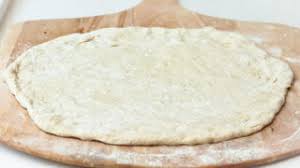
Pizza Dough
Using a 5 liter or larger stand mixer with a dough hook attachment, place the bread flour, water, instant yeast, salt, cornmeal, and poolish in the bowl and mix on low speed for approximately 4 1⁄2 minutes. After the ingredients have been incorporated, increase the mixing speed to medium and mix for 2 to 3 minutes, slowly adding the savory oil to the dough. shape 100-150 gr loave and keep resting for 24 hour before using bake a 300℃ with all the topping in a pizza oven for 3-4 mn

Pita Bread
Straight dough method Fermentation Until doubled in bulk, about 11⁄2 hours at 27°C Makeup and Baking Scale at 90 g. Round the units and bench-rest. With a rolling pin, roll out into circles about 10–12 cm in diameter. Bake on oven hearth or on dry sheet pans at 260°C until lightly golden around edges, about 5 minutes. Do not overbake, or the pitas will be dry and stiff.
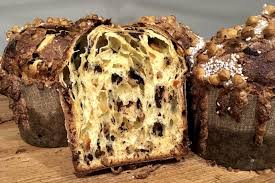
Panettone
Mixing and fermentation. Prepare the marinated fruit mixture: Combine the raisins, peel, almonds, zest, juice, rum and nutmeg in a bowl. Cover and marinate for several hours or, refrigerated, overnight. Sift the flour into a bowl and make a well in the center. Heat the milk to 37°C and mix with the yeast. Pour this mixture into the well in the flour. Sprinkle some flour from the sides of the bowl over the liquid yeast. Cover the bowl and let stand room temperature until the flour begins to appear cracked on top and the mixture bubbles, about 45 minutes. 4. Add the egg yolks, salt and sugar flour mixture. Mix slightly to form a soft dough. Turn off on a floured work surface and knead for 10 minutes until smooth. Place the dough in a lightly floured bowl, cover with a damp cloth and let it ferment at room temperature until doubling in size. Drain the marinated fruits. Add the fruit and butter, softened, into the dough until smooth and well incorporated. Put back in the bowl and ferment a second time at room temperature until doubling in size
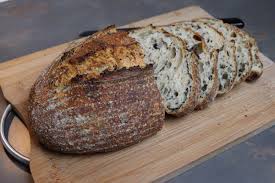
Onion Seed Sourdough
Combine all the dough ingredients in the bowl of a stand mixer and knead with the dough hook for 4 minutes. Add the flavourings, increase the speed to medium, and mix for 10 minutes more. Remove the bowl from the mixer, cover with a clean, damp tea towel, and leave to rise for an hour. Use your fists to punch out excess air, then turn onto a floured surface. Halve the dough and form each portion into a bloomer loaf (see here for how to form a bloomer). Line a baking sheet with baking paper and dust with flour. Transfer the loaves onto it, then put inside a large plastic bag, inflated so that it won’t come into contact with the dough. Place in the fridge and leave to prove for 8–10 hours, or overnight. “When proved, place the loaves still wrapped on the worktop to come up to room temperature (around 20°C). Depending on how hot your kitchen is, this could take an hour, or more. Once at room temperature check on them every 30 minutes until they have has doubled in bulk. Poke the dough with your finger: it should feel like a slightly deflated balloon, with plenty of air still inside it but not on the verge of popping. Watch after you poke it: it should spring back easily. Place a baking stone or baking sheet on the middle shelf and preheat the oven to its highest setting. Place a small baking tin on the oven floor to act as a water vessel. To finish the loaves, brush with water and dust thickly with extra flour. Cut a slash about 1cm deep down the length of each one. To bake, carefully pull the oven rack with the hot baking sheet or stone halfway out of the oven. Working quickly slide the loaves onto the hot surface, and push the rack back into the oven. Tip the ice cubes into the tin at the bottom of the oven and close the oven as swiftly as possible. After 10 minutes, reduce the heat to 200°C for a further 30 minutes. When the bread is baked, turn off the oven, open the door slightly and leave the bread for 5 minutes to let off some steam. Transfer to a wire rack to cool for at least an hour before you devour it.”
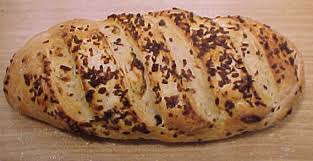
Onion Rye Bread
straight dough method: add all the ingredient in a dough mixer with cold water. mix 5 mn in a 1st speed and 8 mn 2nd speed. let rest 30 mn. cut 450gr dough and shape into a round ball. keep rest again for 30-45 mn and shape to desirate form. bake a 220 mn in deck oven foe 30mn
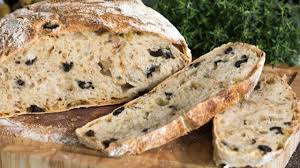
Olive Bread
Mix all the flours and water and mix just until they are combined. Let stand for 30 minutes (autolysis). Add starter and salt. Mix on low speed 5-8 minutes to develop the dough. Fermentation at 24 ° C until almost double in bulk, about 8 hours. baked in the oven on the ground 20 mn at 220 ℃
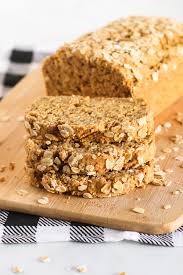
Oatmeal Bread
mixing: Place the oats in the mixing bowl. Add the water and turn the machine on for a moment to wet all the oats. Let stand for 15 or 20 minutes to soften. Add all the remaining ingredients to the bowl. In a spiral mixer, mix on first speed for 3 minutes in order to incorporate the ingredients thoroughly. The dough consistency should be moderately loose, with a slight tackiness from the honey. Turn the mixer to second speed and mix for 3 to 3 1⁄2 minutes, until a moderate gluten development has been achieved. Desired dough temperature: 24℃ Bulfermentation 2 hours (or overnight retarding). folding Fold the dough once, after 1 hour. dividing and Shaping: If the dough is going to be shaped into pan loaves, the dimensions of the pan will determine the dough weight. For a loaf pan measuring 10cm and about 22cm of dough will make a good fit and will take 900gr of dough. Freestanding loaves that will be baked directly on the hearth or baking stone can be divided into any weight. Tasty rolls of about 3 ounces each can also be made with the dough. Divide into desired weights and preshape the dough lightly into rounds. Place the dough pieces on a lightly floured
